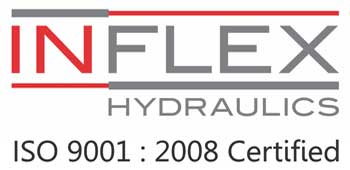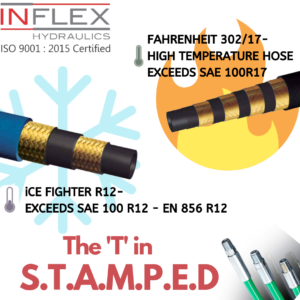Industrial Hose Life
Industrial Hose Life-In the industrial sector, hoses play a crucial role in ensuring the smooth operation of various processes and systems. However, these essential components are often subject to wear and tear, leading to decreased performance and frequent replacements.
To address this issue, it is imperative to adopt measures that maximize the performance and longevity of industrial hoses. This comprehensive guide aims to provide valuable insights and practical tips on extending the life of your hoses.
From proper storage techniques and regular maintenance to effective cleaning methods and selecting the right materials, this guide covers various aspects that contribute to the durability of industrial hoses.
By implementing these strategies, businesses can reduce downtime, minimize costs, and improve overall productivity.
Key Takeaways
- Proper storage and handling techniques are essential for extending the lifespan of industrial hoses.
- Regular inspection and maintenance practices help identify and address wear or damage early on.
- Effective cleaning methods, such as high pressure or chemical cleaning, help maintain hose functionality.
- Choosing the right hose materials that are compatible with the media they will be exposed to is crucial for optimal performance and durability.
Proper Storage Techniques
When it comes to maximizing the performance and longevity of your industrial hoses, proper storage techniques play a crucial role.
Correct storage methods are essential for maintaining optimal storage conditions, which can significantly impact the lifespan and functionality of your hoses.
To ensure the longevity of your hoses, it is important to store them in a clean, dry, and cool environment. Exposing hoses to extreme temperatures, excessive sunlight, or moisture can lead to degradation and premature failure.
Additionally, it is recommended to store hoses in a coiled or straight position, avoiding any sharp bends or kinks that could cause damage.
Implementing the correct storage methods will help protect your hoses from external factors and maintain their integrity, ultimately extending their lifespan and minimizing the need for frequent replacements.
Regular Inspection and Maintenance
To ensure the optimal performance and longevity of your industrial hoses, regular inspection and maintenance are essential steps.
Conducting routine inspections allows you to identify any signs of wear or damage early on, preventing potential failures and costly downtime. During inspections, pay close attention to areas prone to abrasion, such as bends and connections, as well as areas exposed to extreme temperatures or chemicals.
Inspect the hose for any cracks, leaks, bulges, or signs of degradation.
In addition to inspections, regular maintenance is crucial for maximizing the lifespan of your hoses. This includes cleaning, lubricating, and properly storing the hoses when not in use.
Regular inspection and maintenance not only extend the hose lifespan but also contribute to performance optimization, ensuring safe and efficient operations in your industrial processes.
Effective Cleaning Methods
Effective cleaning is crucial for maintaining the performance and longevity of your industrial hoses. Proper cleaning methods help remove dirt, debris, and contaminants that can impact the hose’s functionality and compromise its integrity.
Here are three effective cleaning methods to consider:
- High pressure cleaning: Using high-pressure water or air can effectively remove stubborn dirt and residue from the hose’s surface. This method is particularly useful for hoses exposed to heavy soiling or industrial environments.
- Chemical cleaning: Chemical cleaners designed for industrial hoses can effectively dissolve and remove oil, grease, and other stubborn substances. However, it is essential to choose cleaners that are compatible with the hose’s material and have high chemical resistance.
- Mechanical cleaning: Utilizing brushes, sponges, or other mechanical tools can help physically scrub away dirt and grime. This method is suitable for hoses with delicate surfaces or those that are not compatible with high-pressure or chemical cleaning.
Choosing the Right Hose Materials
Proper selection of hose materials is essential for maximizing the performance and longevity of industrial hoses. When choosing the right hose materials, it is crucial to consider hose material compatibility and chemical resistance properties.
Hose material compatibility refers to the ability of the hose material to withstand the specific media it will be exposed to, such as liquids, gases, or solids. Different materials have different levels of resistance to various chemicals, so it is important to select a hose material that is compatible with the chemicals it will come into contact with.
Chemical resistance properties are determined by the chemical composition and physical properties of the hose material. By considering hose material compatibility and chemical resistance properties, industrial hose users can ensure optimal performance and durability, reducing the risk of hose failure and costly downtime.
Implementing Proper Handling Procedures
What are some key considerations for ensuring the proper handling of industrial hoses? Proper handling procedures are crucial for maximizing the performance and longevity of industrial hoses, as mishandling incidents can lead to costly damage and potential safety hazards.
To avoid such mishaps, here are some important handling precautions to follow:
- Avoid sharp bends and twists: Industrial hoses should not be subjected to sharp bends or twists, as this can cause kinks and internal damage.
- Proper lifting techniques: When lifting or moving hoses, it is essential to use proper lifting techniques to prevent strain or damage to the hose.
- Secure storage and transportation: Hoses should be stored and transported in a secure manner, ensuring they are protected from external factors such as extreme temperatures, chemicals, or sharp objects.
Preventing Excessive Pressure and Temperature
To prevent excessive pressure and temperature, industries must carefully monitor and regulate the conditions in which their industrial hoses operate. Temperature control is crucial in maintaining the integrity of hoses as excessive heat can cause degradation, leading to premature failure. Industries should implement measures such as insulation or heat shielding to prevent excessive temperature exposure.
Pressure monitoring is equally important to prevent overloading the hoses beyond their intended capacity. Regular pressure checks and the use of pressure relief valves can prevent catastrophic hose failure due to excessive pressure. Additionally, industries should consider using hoses with higher pressure and temperature ratings in applications where these factors are expected to be high.
Using Appropriate Fittings and Connections
How can industries ensure the optimal performance and longevity of their industrial hoses through the use of suitable fittings and connections?
Choosing the right fittings and connections is crucial for maintaining the integrity of industrial hoses. Here are some key considerations:
- Fitting compatibility: It is essential to select fittings that are compatible with the hose material and its intended application. Using incompatible fittings can lead to leaks, hose failure, and reduced performance.
- Connection strength: The strength of the connection between the hose and its fittings is critical. Properly secured connections prevent leaks, minimize pressure loss, and enhance the overall performance of the system.
- Quality materials: Using high-quality fittings and connections made from durable materials improves their resistance to wear, corrosion, and other environmental factors.
Training Employees on Hose Safety and Maintenance
Industries can enhance the performance and longevity of their industrial hoses by providing comprehensive training on hose safety and maintenance to their employees. Employee training plays a crucial role in ensuring safety measures are followed and maintenance procedures are carried out correctly.
Training programs should cover various aspects, including identifying potential hazards, proper handling techniques, and regular inspection and maintenance practices. Employees should be educated on the importance of using the correct fittings and connections, as well as understanding the limitations and specifications of different types of hoses.
Additionally, training should emphasize the significance of proper storage and handling procedures to prevent damage and prolong the lifespan of the hoses. By equipping employees with the necessary knowledge and skills, industries can minimize accidents, reduce downtime, and optimize the performance and longevity of their industrial hoses.
Frequently Asked Questions
Can Industrial Hoses Be Stored Outside in All Weather Conditions?
Storing industrial hoses outside in all weather conditions has both pros and cons. While it may be convenient, exposure to elements can lead to degradation and reduced lifespan. Best practices for outdoor hose storage include proper cleaning, drying, and protection measures.
How Often Should Industrial Hoses Be Inspected and Maintained?
Industrial hose maintenance frequency is crucial to ensure optimal performance and longevity. Regular inspections should be conducted according to manufacturer guidelines and industry best practices, considering factors such as operating conditions, environment, and type of hose.
Are There Any Specific Cleaning Solutions That Should Not Be Used on Industrial Hoses?
When it comes to cleaning industrial hoses, it is important to avoid using certain cleaning solutions that can damage the material. Industrial hose cleaning tips include avoiding solvents, abrasive cleaners, and high-pressure cleaning methods to prevent degradation and ensure optimal performance and longevity. Common mistakes in cleaning industrial hoses include using harsh chemicals that can cause deterioration and using excessive force that can lead to physical damage. It is crucial to follow manufacturer guidelines and use compatible cleaning solutions to maintain the integrity and extend the life of industrial hoses.
What Factors Should Be Considered When Choosing the Right Hose Material?
When choosing the right hose material, two important factors to consider are chemical compatibility and temperature resistance. Chemical compatibility ensures that the hose can withstand the substances it will be exposed to, while temperature resistance ensures the hose can handle the necessary operating temperatures.
Are There Any Specific Safety Measures That Should Be Taken When Handling Industrial Hoses?
Preventing accidents and ensuring safety when handling industrial hoses requires adherence to proper handling techniques. This includes using the correct lifting and carrying methods, inspecting hoses regularly for damage, and using appropriate protective equipment to mitigate potential hazards.
Conclusion
In conclusion, by following proper storage techniques, conducting regular inspections and maintenance, employing effective cleaning methods, and selecting the right hose materials, industrial hoses can be maximized for performance and longevity.
Additionally, implementing proper handling procedures, preventing excessive pressure and temperature, and using appropriate fittings and connections are crucial for ensuring the safety and durability of industrial hoses.
Furthermore, training employees on hose safety and maintenance is essential to promote a culture of awareness and responsibility.
By adopting this comprehensive approach, industrial hoses can be optimized for functionality and extended lifespan. This, in turn, reduces costs and improves operational efficiency.
Industrial Hose – The ultimate guide

